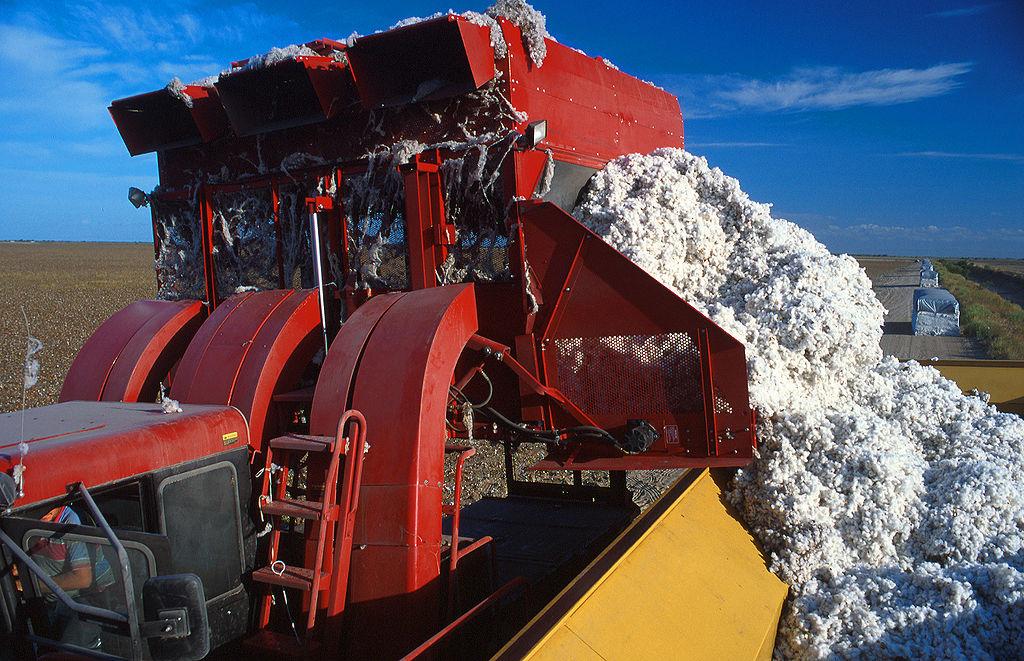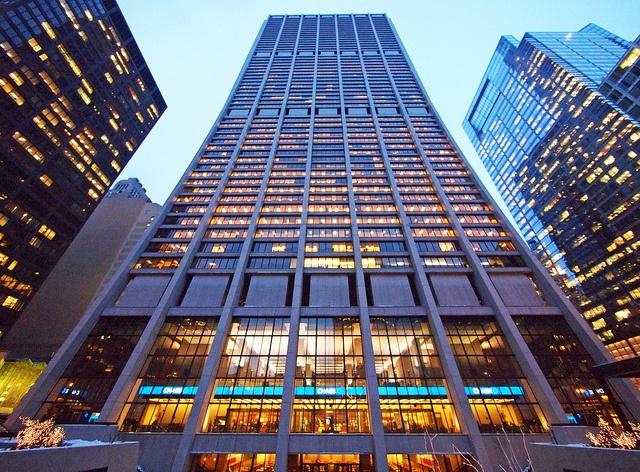Unilever brews up new sustainable tea crop study


Unilever is initiating a major scientific study to evaluate the environmental and economic feasibility of applying biological or non-pesticide methods for plant protection of tea crops in India.
The fmcg giant has commissioned CABI, the agriculture-focused, inter-governmental, non-profit to conduct the research. It will review existing practices of crop protection and the limitations of current techniques in India.
In cooperation with the Tea Board of India, the Tea Research Institutes and key industry partners, CABI will then design protocols for pilot field-trials aimed at investigating novel approaches for biological, non-pesticide management of pests aiming at a holistic rejuvenation of the eco system. These field-trials will be run in partnership with the Tea Board and tea growers on selected estates and will commence during the next growing season.
The Tea Board of India is already pioneering work in this area through “Trustea” and more recently with the launch of a new Plant Protection Code (PPC). Unilever have supported and participated actively in both these initiatives.
As part of the Unilever Sustainable Living Plan, Unilever has committed that by 2020 all its agricultural raw materials will be produced using sustainable crop practices.
Picture credit: © John Hix | Dreamstime Stock Photos
FSC refutes Greenpeace claims over forest destruction in Russia


The Forest Stewardship Council (FSC) has refuted allegations made by Greenpeace that it has failed in certain areas of Russia. It maintains that one area referenced by the NGO, the Dvinsky Forest region, "is an example for effective stakeholder engagement processes that have resulted in strong and lasting solutions for threatened forest species and ecosystems".
The FSC came under fire from environmental campaign group Greenpeace last week over its failure to protect Russia’s remaining wild intact forest landscapes.
Tatiana Khakimulina, forest campaigner for Greenpeace Russia criticized the FSC’s lack of action over the Russian forest industry’s ‘wood mining’ practices: “Instead of endorsing sustainable forest management and protecting Russia’s irreplaceable intact forest landscapes, FSC is providing green cover for their destruction, including Dvinsky Forest - one of the largest unfragmented natural forests in Europe”.??Greenpeace says that its latest series of case studies highlight the FSC’s failures in Russia, specifically showing how the Dvinsky Forest intact forest landscape in the Arkhangelsk region, northwest Russia, is being destroyed, despite much of the area being formerly or currently FSC certified.
However, the official FSC statement reads: "Altogether, a total of 1.5 million hectares are recognized as intact forest landscapes under FSC certification in Russia and exempt from logging activities. The identification and protection of intact forest landscapes only happened due to consultations required by the Russian FSC standard, and the process involved key stakeholders such as environmental NGOs, including Greenpeace. It is fair to say that without FSC certification or under less rigorous certification schemes these forests might have been logged already. Contrary to what Greenpeace states in their report, FSC certification is currently the only effective instrument to protect intact forest landscapes in managed forests in Russia."
The FSC also points out that three of the five forest management certificates referred to in the Greenpeace report were suspended between December 2013 and February 2014 because they did not comply with FSC requirements; a fourth one had already expired earlier and was not renewed. It also asserts that most of the satellite imagery data shown by Greenpeace covers periods before the more rigorous standard was passed, and in a number of cases even before the areas in question were FSC certified.
In June, the Ministry of Natural Resources of the Arkhangelsk Region established a special working group to help implement Dvinsky Forest protection and to address ‘wood mining’ issues.
Although the study focuses on the scandal of ‘wood mining’ in frontier areas of northwest Russia with high concentrations of FSC certificates, the problem is widespread throughout Russia, maintains Greenpeace.??Russia is second only to Canada in having the largest area of FSC certified forest in the world - almost 38.5m hectares.
Picture credit: © Egidijus Mika | Dreamstime Stock Photos
Tesla and Panasonic Agree to Build Battery Gigafactory


Two companies, one long a leader in battery manufacturing, the other an upstart disrupting the entire industry, have agreed to work together and build a large-scale battery factory in the United States. Late last week Panasonic and Tesla Motors inked an agreement that outlines a framework for building what Tesla has called the “Gigafactory.”
This latest partnership builds upon the relationship the Japanese electronics giant and Silicon Valley luxury electric vehicle maker have long fostered. Panasonic invested millions of dollars in Tesla earlier this decade in a bid to accelerate the expansion of electric vehicles in the marketplace, and the company also became one of the car manufacturer’s most important suppliers of lithium-ion batteries.
Details of where the factory will be located and the total amount to be invested were not disclosed in the joint press release the companies issued last week. The smart money is on the Reno, Nevada area, where Tesla is already breaking ground, according to Will Oremus of Slate. But Tesla is also mulling various sites across the U.S. Southwest and will most likely see which state gives it the best deal. Watch for the bidding and promises of financial incentives to intensify with Tesla’s claim that the Gigafactory will employ as many as 6,500 workers by 2020.
The deal, tantalizingly close to becoming reality, creates winners all around. For Tesla, breaking ground on the massive battery factory will establish the company as a force in the automotive and battery sectors. While other car companies repeatedly insist the future of EVs rest on more battery innovation, Tesla, with Elon Musk at the helm, insists improved economies of scale can help bring the cost of lithium-ion batteries down by 30 percent.
Panasonic also gains from its association with Tesla. The company already has a robust lithium-ion battery business, but has had a rocky two years as the company trimmed staff and products as it suffered financial losses. While the Tesla will own the factory, Panasonic will provide the technology and equipment needed to manufacture the lithium-ion battery cells. The Gigifactory’s success could lead to similar deals for Panasonic — although this agreement, which according to Bloomberg could reach a cost of up to $5 billion by the end of the decade, will for long be the largest such battery factory by far.
And assuming the Gigafactory ends up in northern Nevada, the Reno area will come out ahead as well. The region has already emerged as a data center and e-commerce hub, and local politicians are salivating at the thought of automobile manufacturing securing a future in the state. A move by Tesla to Reno would inspire new battery technology to develop while others move in — creating a clean tech hub at the footstep of the Sierra Nevadas.
Image credit: Tesla Motors
Leon Kaye has lived in Abu Dhabi for the past year and is on his way back to California. Follow him on Instagram and Twitter.
UPS Sustainability Report Proves It: Carbon Management is Good Business


The new UPS sustainability report has come out and so has the company's latest financial report. That coincidence provides an opportunity to take a closer look at the strategies that mature companies can enlist to maintain profitability while juggling two colossal new challenges to their business model: the demands of an increasingly carbon-constrained economy and the emergence of significant new market forces enabled by online technology.
The financial report makes it clear that UPS has recognized that new online shopping trends demand new investments. The shipping giant was overwhelmed by a rush of online orders last holiday season, and it is determined to step up its game this year with a $175 million stake in new sorting infrastructure and software improvements.
That investment resulted in a short-term hit on profitability, but UPS is confident that it will pay off in the long run. With that in mind, let's take a look at the company's new 'Committed to More' sustainability report.
The new UPS sustainability report
The highlight of the new UPS Committed to More sustainability report (here's a direct link to the .pdf) is the company's achievement of an initial "carbon intensity" reduction goal of 10 percent, three years earlier than expected.
Though 10 percent appears relatively modest in the context of the increasing urgency of climate action, that goal has enabled the company to up the ante. When UPS announced the new sustainability report yesterday, it also announced that it has set a new goal of 20 percent by 2020, measured by carbon intensity from transportation.
Carbon reduction addresses only one of the aforementioned twin challenges. As indicated by the choice of 'Commitment to More' for the name of its sustainability package, UPS is also determined to reduce emissions while also expanding its business.
Doing more with less
The sustainability report highlights how UPS's transportation initiatives have reduced emissions for the past two years in a row, even though the company's global shipping has increased.
In summing up the company's achievements to date, UPS Chairman and CEO Scott Davis had this to say:
Our ability to grow our global shipping volumes and reduce total carbon emissions should be a signal to business that it is possible to do more for the environment while also serving more customers and adding more value.
UPS global shipping was up 3.9 percent in 2013 compared to 2012, while "absolute" carbon emissions went down 1.5 percent. Though that's not particularly impressive in terms of raw numbers, UPS has only just begun to tap into its potential for reducing transportation-related carbon emissions.
The company credits a good deal of its progress to the ongoing transition of its fleet to alternative fuel vehicles and energy efficient vehicles. Currently, UPS has 3,647 such vehicles and plans to add many more. At last count the total number of UPS delivery vehicles was well over 96,000, so there is ample room for even more improvement.
This is where things get a little complicated, though. On the part of electric vehicles, while tailpipe emissions are low-to-zero, whenever UPS charges batteries on the grid there may be fossil fuels involved.
The company's recent foray into solar power indicates one possible path toward resolving electricity supply chain issues for its EVs. UPS was once in the vanguard of EV experimentation, and with that corporate legacy under its belt the company is in a good position to develop new strategies for ensuring that its EV fleet runs on renewably-sourced electricity.
UPS is leaning heavily on natural gas vehicles to reduce transportation emissions, but that is also problematic. While fossil natural gas is cleaner at the burn point than petroleum fuels, it is not a clean fuel. That has been amply demonstrated by studies on lifecycle methane emissions as well as mounting evidence of the environmental risks of fracking.
On the other hand, the opportunities are growing to harvest renewable gas from landfills, food waste, livestock farms and even industrial wastewater as well as municipal sewage, so the potential exists for UPS to transition from clean tailpipes to a cleaner lifecycle for its natural gas vehicles.
Clean fuels, clean strategies
Problematic fuels aside, the UPS sustainability report also underscores the importance of transportation strategy in maximizing the return on investment in alternative fuel vehicles and energy efficient technology.
In 2013, UPS introduced a new computer-aided navigation system called the On-Road Integrated Optimization and Navigation (ORION). Described as the "brains and backbone" for achieving future emissions reduction, the system identifies optimum routes on a daily basis for package pickup and delivery.
With guesswork eliminated, ORION alone is expected to lead to a fuel savings of 1.5 million gallons of petroleum fuel.
Customer responsibility and corporate responsibility
The UPS sustainability report also hightlights ORION-type strategies on the customer side, in the form of its voluntary "My Choice" and "Smart Pickup" programs. These initiatives enable customers to choose pickup and delivery options that reduce emissions, including unnecessary emissions resulting from unsuccessful deliveries.
UPS also offers customers carbon-neutral shipping, using offsets validated by the Carbon Neutral Co. and verified by Société Générale de Surveillance (SGS). Interestingly, one of the offsets includes biomethane capture.
As for corporate social responsibility, in addition to numerous community-based efforts UPS has focused on leveraging its global transportation network for emergency response and disaster relief, an area that will increase in importance as climate change intensifies. In that regard, the company's transition to clean vehicles will also come into play as the benefits of renewable energy in disaster relief become widely recognized.
It's also worth noting that UPS is a member of the Obama administration's Clean Fleets initiative, which aims to reduce petroleum dependency in the transportation sector. As a Clean Fleets partner, UPS has committed to using its emissions reduction efforts as a learning laboratory and best practices model for the transportation industry as a whole.
Clean Fleets kicked off in 2011, with UPS joining AT&T, Fedex, PepsiCo and Verizon as a charter member. This kind of corporate leadership has a significant ripple effect that goes beyond a company's sustainability report. In just three years Clean Fleets membership has climbed to 23 partners, including other major fleet owners such as GE, Ryder and Frito-Lay.
Image courtesy of UPS
Wikileaks Targets Australia with New Leak and More Controversy


Just when we started to forget about Wikileaks and its founder Julian Assange, the activist organization is back in the news. This time it isn’t the covert tactics of the National Security Agency, Guantanamo prisoners or the touchy nature of the federal government’s overseas relations that Wikileaks is fingering, but the Australian government.
On Tuesday Wikileaks released information about a gag order that prevented Australia’s media from informing the public about investigations into a multi-national graft case. In addition to publishing the information on its website, Wikileaks also released notice of the gag order to the Guardian in the U.K.
According to the Guardian, the Supreme Court of Victoria said it placed the ban “to prevent damage to Australia's international relations.” What has critics particularly concerned, however, is the nature of the gag order, which prevents Australian media from even acknowledging that there is a ban in place.
“Who is brokering our deals, and how are we brokering them as a nation? Corruption investigations and secret gag orders for 'national security' reasons are strange bedfellows,” asserts Wikileaks.
According to its website, the gag order relates to the “secret 19 June 2014 indictment of seven senior executives from subsidiaries of Australia's central bank, the Reserve Bank of Australia (RBA).” Those indictments and the ongoing investigations are linked to a scandal that surfaced in 2012 concerning alleged payments between RBA staff and government officials in Asia.
Wikileaks: Gag order 'threatening every Australian'
But it isn’t the discussion of RBA’s alleged scandal that is kicking up the controversy. That’s old news. The concern, says Wikileaks, is that the gag order prevents the public from knowing the depth of the investigations into the banking scandal, which involves Australia’s largest bank and now has the potential to engulf high-ranking officials from Malaysia, Indonesia and Vietnam.
"With this order, the worst in living memory, the Australian government is not just gagging the Australian press, it is blindfolding the Australian public … Foreign Minister Julie Bishop must explain why she is threatening every Australian with imprisonment in an attempt to cover up an embarrassing corruption scandal involving the Australian government,” says the Wikileaks site.
Indonesia's president demands statement from Australia
Not surprisingly, Indonesia’s President Susilo Bambang Yudhoyono, who learned of the ban from the leaked document, has demanded an explanation from Australia. He has also called on Prime Minister Tony Abbott’s office to “issue a statement that both [former Indonesia President] Megawati [Sukarnoputri] and my names are unstained, and so they do not defame other Indonesian officials. We want to hear directly from Australia,” said Yudhoyono. So far, no such statement has been released by Australia.
The leak not only raises questions about the ethics of public information bans, but has also forced the Australian government to look at the implications of such steps when international relations are at the center of a multi-national investigation. Interestingly, little consideration seems to have been given to the far greater damage that could occur if the ban was leaked to the press.
Information bans not unusual
But no matter what Assange and his team wish to imply, this isn’t just a story about a government cover-up or the ramped-up use of such information bans by the courts in Victoria (which included 644 such instances in 2011 by the Victoria courts), but also about the value that is gained by creating such controversies.
Information bans are not really such an unusual tactic in courts, even in Western countries. In the U.K., such “double bans” have their own legal name: superinjunctions. The U.S. has used this approach as well, to the ire and dismay of librarians who found themselves unable to discuss investigations launched under the sweeping powers of the Patriot Act after 9/11.
And government bans on information during ongoing investigations are common in many countries, including the U.S., Canada and the U.K. They afford investigators the ability to complete investigations without the constant publication of sensitive information that is still being investigated. Of course, they also help limit embarrassment to the government when initial allegations prove to later be wrong or inconclusive.
But releasing information about a gag order of this breadth and controversy is a valuable move when it comes to underscoring the limited rights of otherwise well-informed voters. Its impact on public sentiment is instantaneous and creates plenty of chatter when it comes to the rights of citizens and the assumed limitations of governments.
Wikileaks traffic is up
And it’s good for Wikileaks. According to analytics firm Alexa, Wikileaks readership was in freefall until last month when it released its latest leak. Since then, its ranking has climbed almost 2,000 points.
The question that needs to be asked at this point is what its proponents really want to see when it comes to ensuring there is a stable environment for international commerce. Will leaking documents that are designed to offer law enforcement agencies the ability to investigate high-ranking officials diplomatically, thoroughly and safely really ensure a better, more transparent economy? And will such ill-timed releases about international scandals that impact small businesses as well as large governments really make it a safer world? Or are there other, less damaging ways to make their point and change laws?
The answer to that question has yet to be seen. For now, getting to the bottom of just who benefited from Australia’s worst banking scandal may now take a lot more time as well as effort to resolve.
Image credit: Wikileaks
H&M, The World’s Largest Organic Cotton User: Better Enough?


Its clothes are still largely manufactured under dubious conditions in Bangladesh, and many critics doubt the company’s commitment to sustainable apparel, but H&M can claim again one top ranking: the world’s largest procurer of organic cotton. When considering the company’s massive impact across the globe, however, the reaction of many will only be yawns. And with the amount of land worldwide devoted to producing materials for the textile and fashion industry, will a growing sliver of this total now certified “organic” really make a difference for people and the environment?
According to the Textile Exchange’s most recent Organic Cotton Market Report 2013, H&M has reemerged as No. 1 in its annual business rankings of worldwide organic cotton buyers. H&M had topped the list in 2010 and 2011, only to fall to second in 2012. The increased proportion of organic cotton H&M had sourced was largely the result of this jump — according to the company, the share of cotton coming from organic sources rose from 7.8 percent in 2012 to 10.8 percent last year. But with the decade about halfway finished, it is doubtful H&M can meet one of its most important sustainability goals.
The spike in organic cotton notwithstanding, H&M still has a long ways to go before it can come close to having all of its cotton coming from “sustainable sources” by 2020. Like other apparel companies in its sector, H&M excels at outlining goals and statistics: yes, it takes 8,500 liters of water to create a pair of jeans; it is an active member of the Better Cotton Initiative; and has worked with 220,000 farmers to provide them the tools and knowledge necessary to grow better cotton. Those goals, however, often face the daunting reality: For example, when it comes to training those farmers, H&M aims to have 1 million farmers trained by next year — a tough task ahead for the company if it is not going to disappoint its stakeholders. Organic cotton production will not be enough to help the company reach its goals — nor will recycling. “Better” cotton, therefore, will be the key for H&M to meet those sustainability goals.
When it comes to where all of this organic cotton is coming from, it is eye-opening to see which countries play a large part in clothing the world — as in who supplies the massive companies such as H&M. India and China, of course, lead the pack, but emerging economies ranging from Turkey to Mali are also in the top 10; and all of these companies are places in which the Better Cotton Initiative is leading projects. But in an era where more consumers equate “organic” with ethics and quality (fair or not), the challenge for H&M and its peers is to convince shoppers that “Better Cotton” is good enough. Consumer acceptance would certainly help farmers in those countries make a decent living while mitigating their impact on the environment but do not have the resources to cultivate organic cotton.
Whether the scale of organic cotton will truly make a difference is decided when one reviews the top 10 companies on the list. Considering the ongoing food versus fuel, feed and fiber debate, it is worrying when you see the companies focused on fast fashion making the list along with H&M: C&A, Tchibo, Decathlon, Target and Inditex. And it is also telling the world’s largest retailer, Walmart, did not make that list at all. H&M and its peers can tout these impressive-sounding metrics all they want; whether this is really true progress, however, is open to debate.
Image credit: USDA
Leon Kaye has lived in Abu Dhabi for the past year and is on his way back to California. Follow him on Instagram and Twitter.
5 Things Every Social Entrepreneur Should Know Before Hitting the Launch Button


By Julian Fishman
I had the pleasure of hearing some of the Bay Area’s most innovative social entrepreneurs share their stories and peer into the future at the recent Idea People: Thinking for Good event held at the SFJazz Center in San Francisco.
The event was curated by Five Thot, a forward thinking design and event organization that encourages people to imagine the world as it could be, rather than as it is today. As a shout-out to Five Thot, here are five themes that will help big thinkers and dreamers get their ideas off the ground:
1. Problem + Passion = Opportunity
The vast majority of the entrepreneurs on show took an unconventional path to arrive at the helm of their social enterprise. IndoSole’s founder, Kyle Parsons, spent his teens working in a recycling center with the occasional surfing trip to Bali. Kiva’s founder Matt Flannery was inspired by Mohamed Yunus to search for a more impactful job and found himself giving up the corporate world for microfinance in Uganda. Lauren Walters (pictured), founder of 2 Degrees Food, witnessed first-hand the extreme malnourishment of Rwandan children at a time when Tom’s Shoes’ ‘one for one’ business model was starting to gain traction.
While the paths these entrepreneurs traveled are seemingly incongruous, they all got to where they are today by feeling a deep connection to a problem that provided the courage to find solutions to the seemingly insoluble. Ideas at the confluence of problem and passion provide fertile ground for making an impact.
2. Bring it to the masses
In the words of Ideo.org’s Patrice Martin, good design starts with the human element first. While everyone enjoys the safety of preaching to the converted, the most meaningful impact can be achieved by generating interest in demographics not typically concerned with the issue at heart. This perspective was echoed by award-winning film maker Jacob Kornbluth whose movie Inequality For All (pictured) was crafted to resonate with people who do not necessarily feel passionate about income inequality like he does.
It’s important to understand that serious problems don’t necessarily require serious solutions. Who would have thought that the creation of cartoon characters and nail salons in Africa could be the vehicle to educate young African women about the importance of safe sex? By meeting people where they are, you will exponentially enhance your chances of making the desired impact that brought you into the world of social enterprise.
3. Resilience
Solving complex problems is not for the faint hearted and requires a thick skin to surmount the obstacles that are put in your path. As many social entrepreneurs are pushing boundaries and taking the road less travelled (or not travelled at all), a strong will to succeed is imperative. As Robyn Goldberg, CEO of the Minerva Institute highlighted, the challenge of building a radically different educational curriculum from scratch fills her with doubt on a frequent basis. It is critical to positively channel this fear of failure to allow the realization of big and bold dreams.
4. Partner with like-minded people
Closely related to resilience, is the need to partner with like-minded people and organizations. Greatness does not happen in a vacuum and partnerships are a creative way to build scale, support and credibility for an idea. IndoSole moved from a figment of Parsons’ imagination into a serious business idea when he partnered with an Indonesian manufacturer that provided the technical manufacturing competence to transform old tires into dope kicks. Similarly, Back to the Roots was founded by two grads from UC Berkeley, Nikhil Arora and Alejandro Velez (pictured), who were united in their curiosity that spent coffee grounds could be used to grow edible mushrooms. While both were destined for the corporate world post-graduation, the strength and enthusiasm they found in each other was instrumental in their transformation from would-be investment bankers to urban farmers. Partnering with like-minded people creates power in numbers that provides the fortitude necessary to tackle the impossible.
5. Emotional dividends
While most social enterprises hope to make money with their ventures, there is clearly a higher cause in focus. It was impressive to hear the myriad of ‘a ha’ moments that drove these entrepreneurs to dream big. Kiva’s founder Matt Flannery could not have imagined that funding a freezer out of his own pocket to help a Ugandan entrepreneur could have provided such emotional warmth. Soma’s founder Mike Del Ponte knew he had found his calling when he saw the expression on a 76 year old Ethiopian man’s face as he drank clean water for the very first time in his life. Products and services that generate emotional dividends and deeper connections provide the authenticity to tell your story in a manner that compels people to join you for the ride.
Do you think you have what it takes to build an impactful social enterprise? Hopefully these tips will put you in good stead to go out into the world and make an impact. Dream big, make connections and tell your story. Go on!
Human Values and CSR: Love, Compassion, Empathy and Altruism


Editor's Note: This is the second post in a six-part series written by Donald J. Munro of the University of Michigan. You can follow the whole series here.
By Donald J. Munro
The human values of love and compassion, empathy and altruism emerge first in the bond between care-giver and infant. Later, the emotions associated with these values extend to other kin, friends, and then, often, to one’s community. They help hold these groups together.
Biologist E.O. Wilson says" “Among the traits with documented heritability, the closest to moral aptitude are empathy to the distress of others and … [the] attachment between infants and their caregivers" [Consilience 1998, 253]. In these relationships, love may motivate acts of altruism. Wilson notes that, “Kin selection is especially important in the origin of altruistic behavior.” Kin selection means we are more likely to help our blood relatives than those not related to us, favoring their ability to have babies and survive, even at a cost to our own survival.
Such altruistic behavior can solidify community relations. As sympathy or empathy, this emotion involves seeing things from the point of view of another person, especially someone whose well-being is linked to ours. Mirror neurons help us judge how others are thinking or feeling. So the emotion begins in the family and as the person matures, expands beyond it. Biologists and psychologists have repeatedly discovered through their research that empathy and compassion derive at least in part from our basic human biology. At the same time, they have deep roots in classical Chinese Confucian (Mencian) ethics. Mencius (4th century BCE) said that “The heart/mind of compassion is possessed by all men,” along with the heart of shame and of respect (see next blog, on Respect or Dignity/Avoidance of Shame) [Mencius vi.A. 6] The Analects of Confucius said that “Filiality towards parents is the root of the humane treatment of others.”
So bonding with friends and others has some roots in our family love; those bonds result in our having empathy for both family and friends, and ultimately our community. Corporations do not experience compassion or empathy; people do.
Once again, the banks’ foreclosure record is relevant, this time because of its assault on basic family and community social relations, which derive from and are sustained by love, empathy, and altruism. Just Cause and the Alameda County Health Department developed a frame work for understanding the relationship between foreclosure and health:
“Foreclosures do not only impact an individual’s or household’s health, but can affect community health as well, through the disruption of social networks, increases in blight and crime and loss of revenue for the city…The displacement of families can result in the disruption of the sense of community in a neighborhood and the social networks that existed…"
Not only did the behavior of JPMorgan Chase, along with that of a number of other big banks, help to rupture some community bonds through their mortgage practices, but their actions indirectly led to other community stresses. Let me illustrate with the case of a community bank in my town, Ann Arbor, Michigan.
Regulations to control fraudulent and risky actions by some global banks inadvertently had an impact on community banks, which are very different. Community banks typically have assets of $1 billion or less ( c/fChase has $2 trillion plus), serve borrowing needs of small businesses, and have local officers, known in their communities. But the legal problems of the global banks, in part related to the Great Recession beginning in 2008, have led also to the treatment of community banks as though they were global banks.
Senator Christopher J. Dodd, one of the authors of the regulations (“Wall Street Reform and Consumer Protection Act of 2010,” known as the Dodd-Frank law) wrote: “…the bulk of the bill’s new regulations apply only to a few dozen of the largest ones [banks], each holding more than $50 billion in assets.” [See “Five Myths about Dodd-Frank”, Washington Post October 21, 2011]. But the regulators are not doing this
The Bank of Ann Arbor, founded in 1996, has assets just short of $1billion. However the federal regulators have been relying on Dodd-Frank rules as the “best practice” during their examinations here. As a result, this bank has been negatively affected by some of the new Dodd-Frank regulations, in these ways:
- It has had to increase from one to four and a half persons, staff members who deal with compliance issues, with which both the CEO and the COO also deal. This is a large cost.
- The new laws have strict and detailed requirements for a possible borrower to receive a “qualified mortgage,” having “Ability to Repay.” The eight categories of rules concern such matters as credit history and debt-to-income ratio. The new rules reduce the number of applicants who, though locally deemed qualified to borrow, still fail the federal eight items. For example, a foreigner may have no credit history. The Bank of Ann Arbor regards itself as now unable to assist clients in unique situations, applying its knowledge of local employers and local customers. The bank believes that a community bank should be able to make a loan on local rules at the local level, but agree not to sell it on any secondary market.
The F.D.I.C., which oversees community banks, and the Federal Reserve can fix this situation by constructing new rules applicable specifically to community banks such as the Bank of Ann Arbor (and not to global banks).
Image credit: Flickr/picken
Next: Respect or Dignity/Avoidance of Shame
Donald J. Munro is professor emeritus of philosophy and Chinese at the University of Michigan. Munro connects venerable philosophical traditions to modern scientific discoveries, always with a concern for the ethics of human action. His books include The Concept of Man in Contemporary China, Images of Human Nature: A Song Portrait, and Individualism and Holism: Studies in Confucian and Taoist Values. In recent years he has been the Ch’ien Mu Lecturer in Chinese History and Culture (2006) and the Tang Junyi Visiting Professor (2009) at the Chinese University of Hong Kong. He is a founding member of the Interfaith Partnership for political Action (ippa.us).
Enertia Homes Mimic Earth's Atmosphere for Ultra Energy Efficiency


Mimicking the Earth's atmosphere and its ability to capture and store heat, Enertia homes have an outer and inner shell to boost energy efficiency and comfort. The inner shell, containing the living room, bedrooms, bathrooms, dining room and kitchen, remains at a relatively constant temperature despite fluctuations in outdoor temperatures and conditions. Mimicking the trade winds, the outer shell circulates air between the basement and the attic, which are connected through a sunroom in the outer shell.
In the summer, when the angle of the sun is higher in the sky, the sun heats up the air in the attic. The vent releases the hot air, which causes cold air to enter through the north basement windows.
These homes are designed by Michael Sykes, an engineer and founder of Enertia Building Systems, a company based in Youngsville, North Carolina. "People inside are getting their warmth, not from hot air, which would be stifling, but you’re getting your warmth from warm floors and walls, so you can actually tolerate a cooler house and still be comfortable," he says.
Occupants can open the doors between the sunroom (outer shell) to the inner shell, boosting indoor temperatures and reducing the need for auxiliary heat. Ceiling fans in the sunroom help kickstart the airflow in the outer shell. Sykes says that homes in the sunny West do not require HVAC systems. Because of the passive solar orientation, the sun can reliably heat the home in the winter, and the cooler basement temperatures cool the home in the summer. Due to cloudy winter weather, he does recommend radiant floor heat in Enertia homes, in most of the Northeast and Midwest.
He estimates the cost is 10 to 15 percent greater for a home with a double shell, but this upfront cost is offset by a significant reduction in energy costs. The design varies slightly depending on the climate. For example, structurally integrated panels (SIPs) used in the roof are thinner in Florida than in Connecticut, where less insulation is needed. The "Extreme" Enertia house design was created for cold climates and can withstand temperatures up to -60 degrees Fahrenheit.
Since the boards are precut, the design has to be determined before construction begins and doesn't allow spontaneous design changes. Because Enertia precuts and numbers the tongue and groove boards, they are easy to assemble using an electric drill. There is very little waste on the job site because there are no scrap boards, reducing waste collection costs and environmental impact. Some homeowners choose to build the homes themselves, reducing the upfront cost of the home.
The cost of the homes varies by the design and size. The simplest double-envelope design is the 1,000-square-foot (plus a basement) Acadia with two bedrooms, starting at $66,400. This price includes a shell and doesn't include additional features, such as porches or solar panels, site work, or construction costs. Sykes says that southern yellow pine is cheaper in North Carolina than in Oregon and elsewhere, helping to keep the cost of the home down, or depending on the location, offsetting the shipping costs. The resin in the southern yellow pine stores heat, captures energy from the sun to boost comfort and reduce the use of fossil fuels, according to Sykes.
Although Enertia customers pay a premium for this solid wood, double envelope construction, customers rave about comfort, low utility bills, and generous day lighting. For people looking for a custom, energy efficient home, Enertia Homes are a really good option.
Photo Credit: Enertia Homes
https://www.youtube.com/watch?v=1gY8XZ6EWik
J.M. Smuckers Commits To a Sustainable and Traceable Palm Oil Supply Chain


J.M. Smucker recently updated its policy on palm oil sourcing, the company explained in its 2014 corporate social responsibility report.
Smucker’s latest CSR report states that the company is committed to developing a “fully sustainable and traceable palm oil supply chain.” It set a target that palm oil purchases will come from “responsible and sustainable sources” by December 2015. In 2012, Smuckers began buying palm oil from Roundtable on Sustainable Palm Oil (RSPO) certified sources, and received RSPO certification in January 2013.
As a result of the new policy, a shareholder proposal filed by Clean Yield Asset Management and Green Century Capital Management was withdrawn. The food producer is currently valued at $10.8 billion in market capitalization. Its brands include Smuckers’ jams and jellies, Jif peanut butter, Crisco, Folger and Dunkin’ Donuts.
The CSR report also details Smucker’s palm oil sustainability principles:
- No development in high carbon stock forest areas or high conservation value areas
- No burning to clear land for new planting or replanting
- No new development on peat lands, regardless of depth
- Apply best management practices for existing plantations on peat lands and explore options for restoration when feasible
“Smucker’s updated commitment provides greater detail and accountability to its 2013 commitment to source palm oil exclusively from members of the Roundtable on Sustainable Palm Oil (RSPO),” said Shelley Alpern, director of social research and shareholder advocacy at Clean Yield Asset Management.“By pledging to secure deforestation-free palm oil, Smucker is not only protecting the environment, but its brand and shareholder value as well. We urge the company to rapidly implement its commitment to help end deforestation for palm oil,” said Lucia von Reusner, shareholder advocate at Green Century Capital Management.
Palm oil industry responsible for massive deforestation
Palm oil is is used in about 50 percent of the everyday goods we use. Over 90 percent of the palm oil produced is used to manufacture food products, cosmetics, detergents and similar products. The majority, over 90 percent, of palm oil plantations are in Indonesia and Malaysia, with Indonesia being the leading supplier.
To make way for palm oil plantations, tropical forests and peatland forests are often torn down, killing endangered species, causing carbon emissions and disrupting the lives of local communities.
Palm oil plantations are the causing massive of rainforest destruction in Indonesia and Malaysia, according to the U.N. Environment Program. From 1990 to 2005, 55 to 60 percent of palm oil expansion in Indonesia and Malaysia occurred at the expense of virgin tropical forests, which is likely why Indonesia is the third-largest greenhouse gas emitter in the U.S. despite its small size. About 3,7500 to 5,400 tons of carbon is emitted when peatland is drained for palm oil production, and clearing just one hectare of tropical forest emits 500 to 900 tons of carbon. Indonesia’s palm oil plantations cover 9 million hectares, about the size of Maine and 26 million hectares are projected for 2025.
Image credit: Smuckers